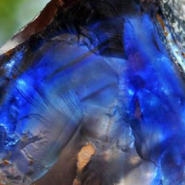Part 1 – An Industry without Standards or Formal Education
Though diamonds and other gemstones have been collected and coveted for many centuries, it has taken almost as long for diamond cutters and jewelers to learn how to reveal a gemstone’s inner beauty.
As early as the 1300s, European stone cutters were changing crystals by polishing their faces so that no natural irregularities of the original crystal remained. While this type of polishing and cutting did allow light to reflect off the outer surface, the fire and brilliance remained hidden inside. Small changes introduced over the next few centuries made diamonds more interesting, but still hid the potential of diamonds to return light as we know it today.
Read More >>Large diamond finds always draw headlines, and the latest discovery of a 131.5-carat piece of white diamond rough in Angola stacks up favourably next to other impressive rarities like the Lesotho Promise (603 cts), the Letseng Legacy (493 cts), and the Leseli Letseng (478 cts). West Perth, Australia-based Lonrho Mining recovered the stone from a bulk sample at its Lulo concession.
Read More >>Picture blue moonlight shining brightly through fog and you’ll understand why this variety of feldspar is named moonstone. Its shimmering sheen moves through the stone like moonlight.
Read More >>With all the cultural conversation of today’s “metrosexual” man – well groomed, sophisticated, and cosmopolitan – it’s no wonder that men’s jewelry is approaching center stage in the fashion world.
Read More >>September’s birthstone, sapphire, is unique among gemstones. It is a very hard gemstone, second only to diamond. Sapphire is a variety of the mineral corundum. While other stones are known for their singular hues, sapphires come in a variety of colors.
Read More >>


